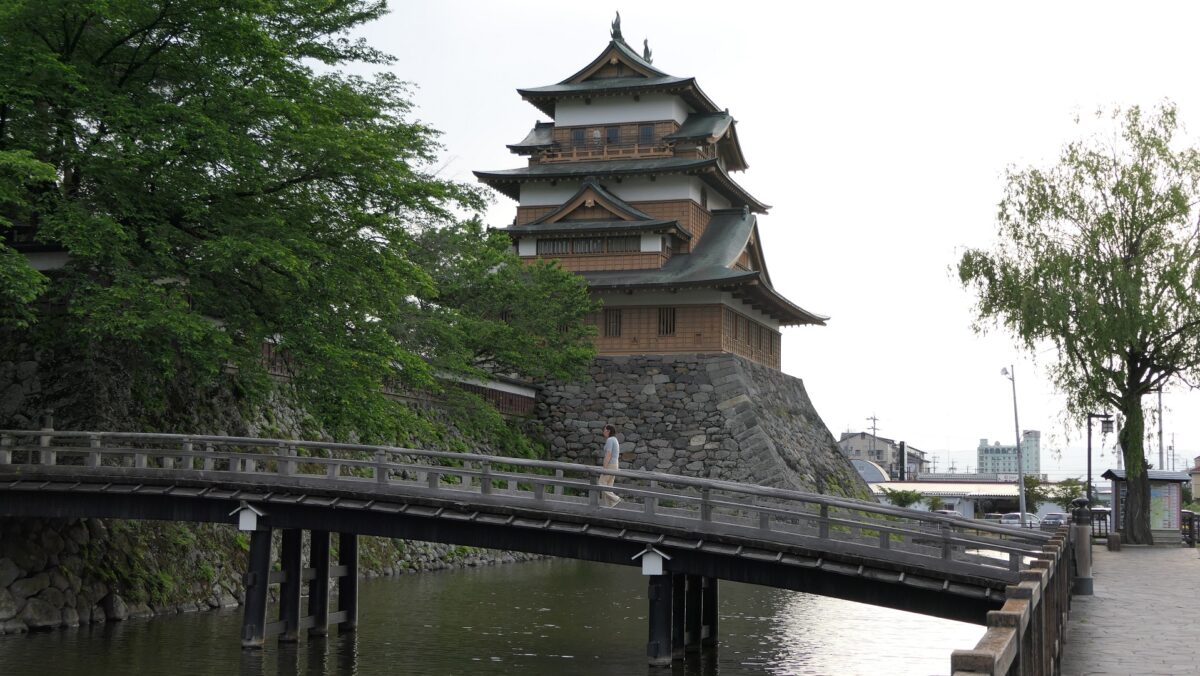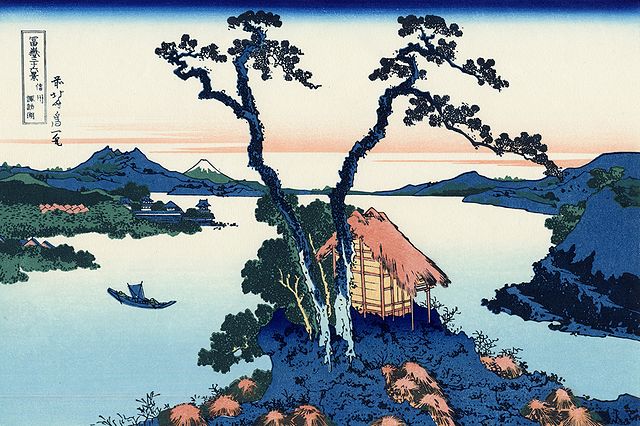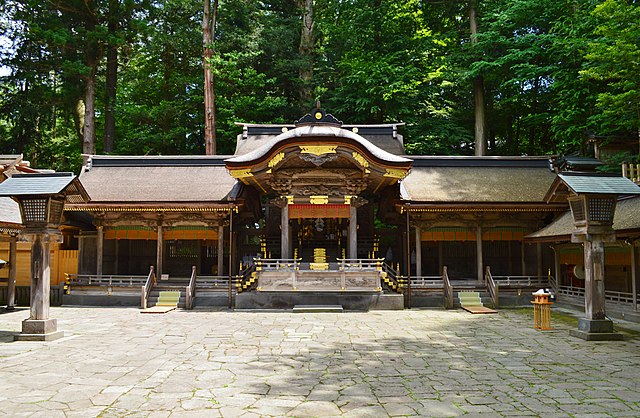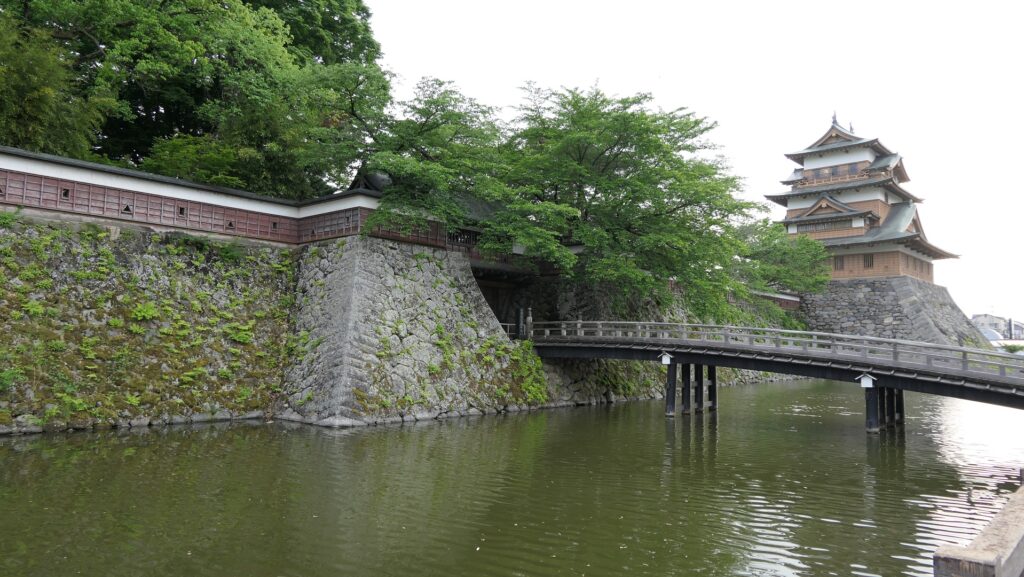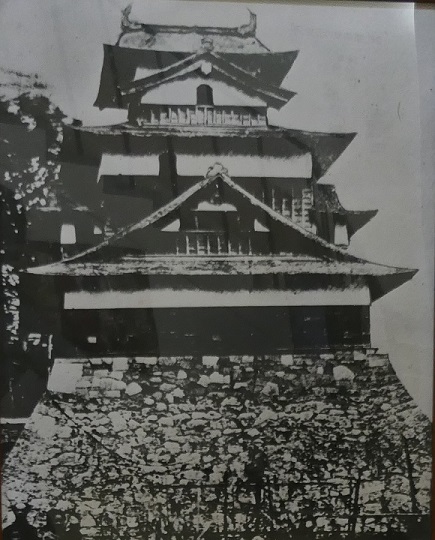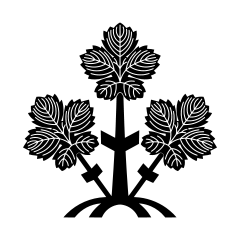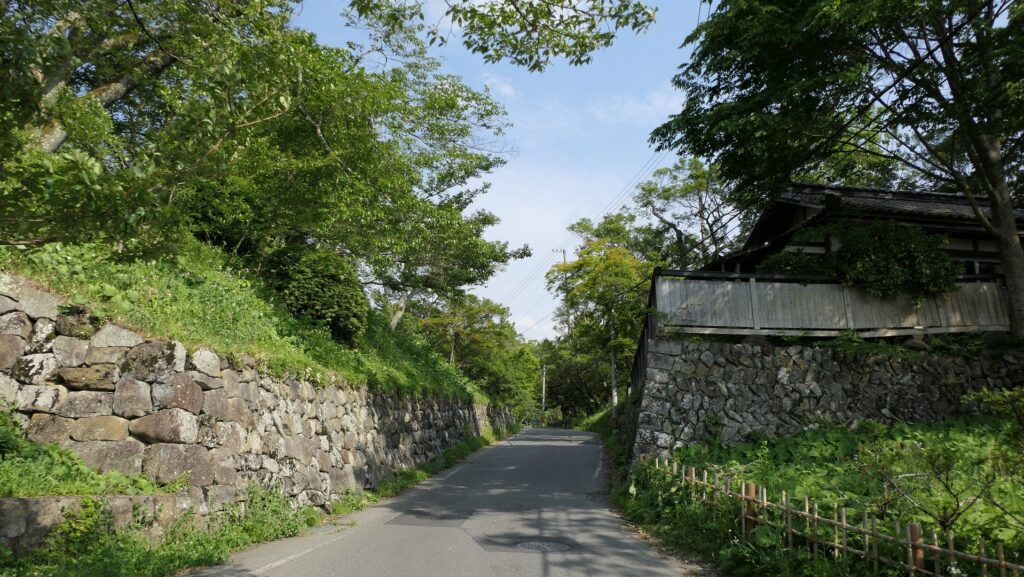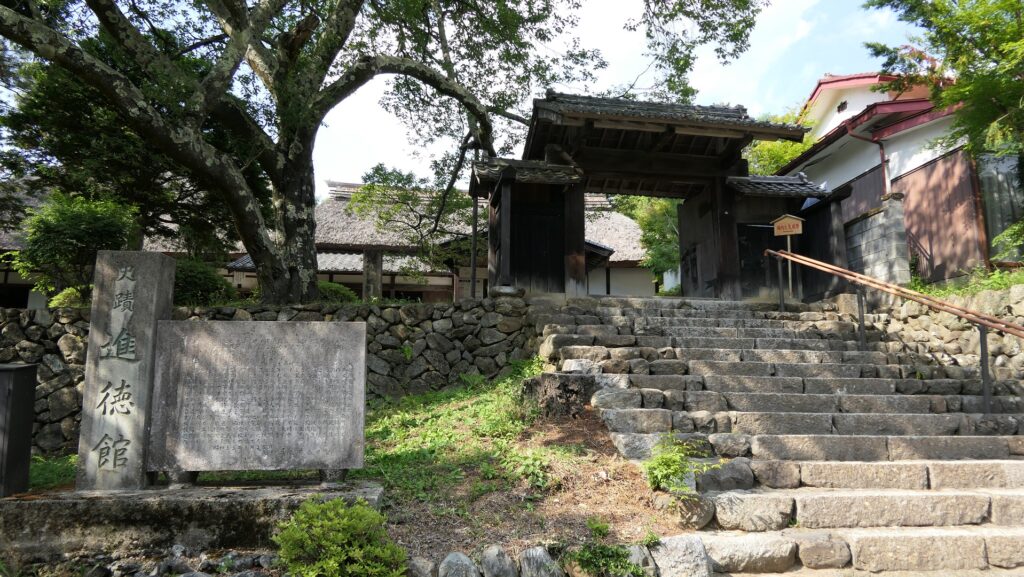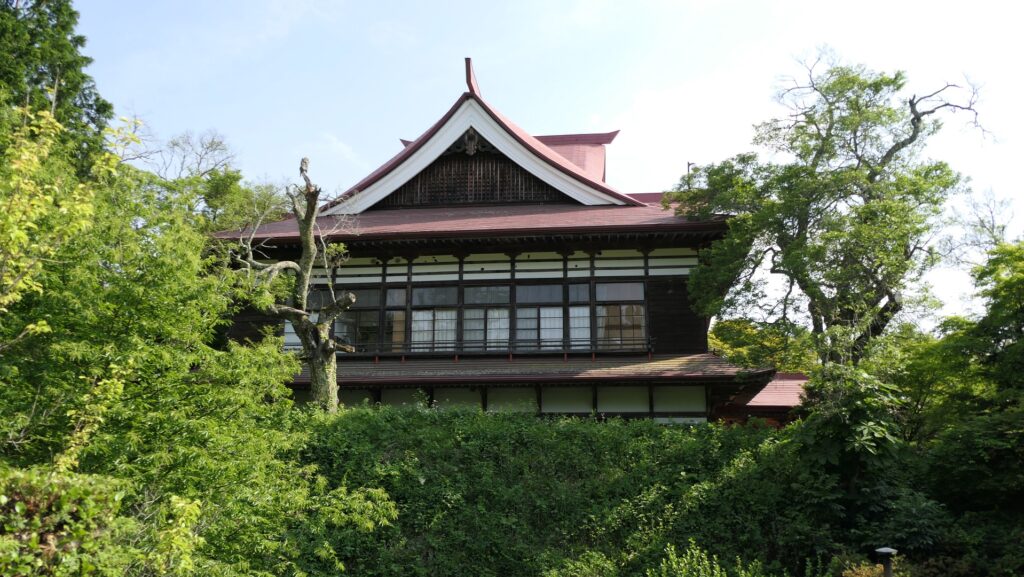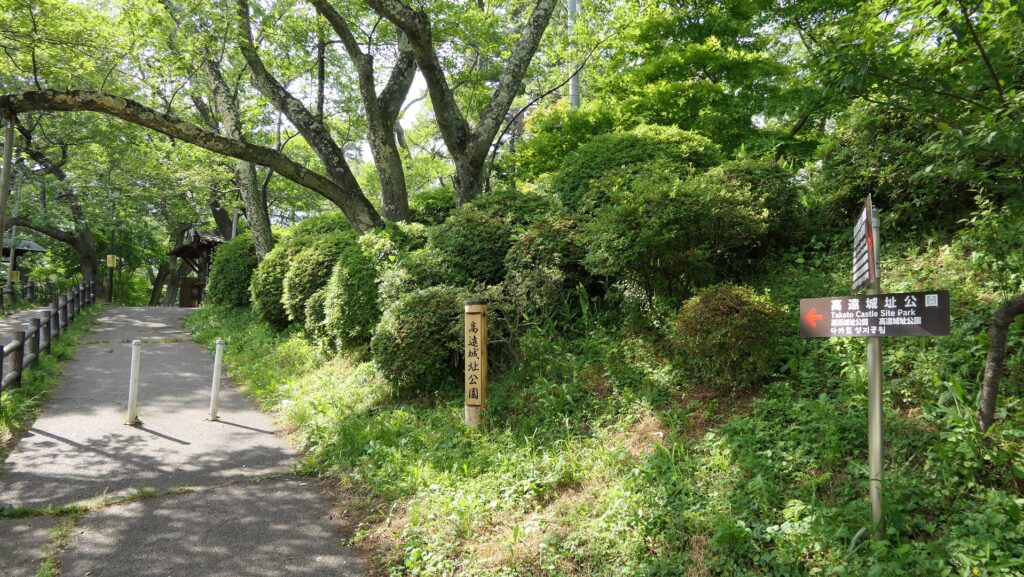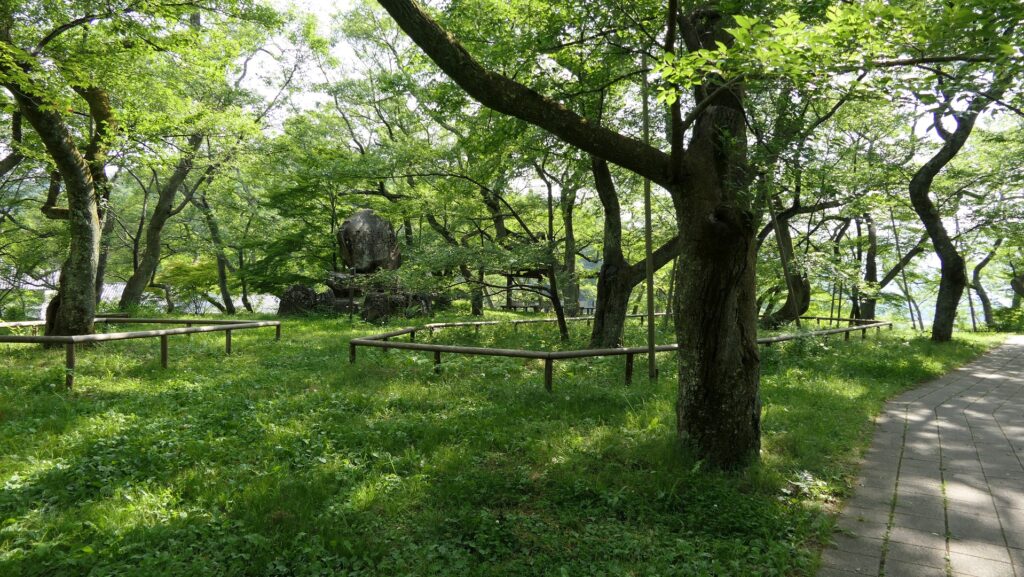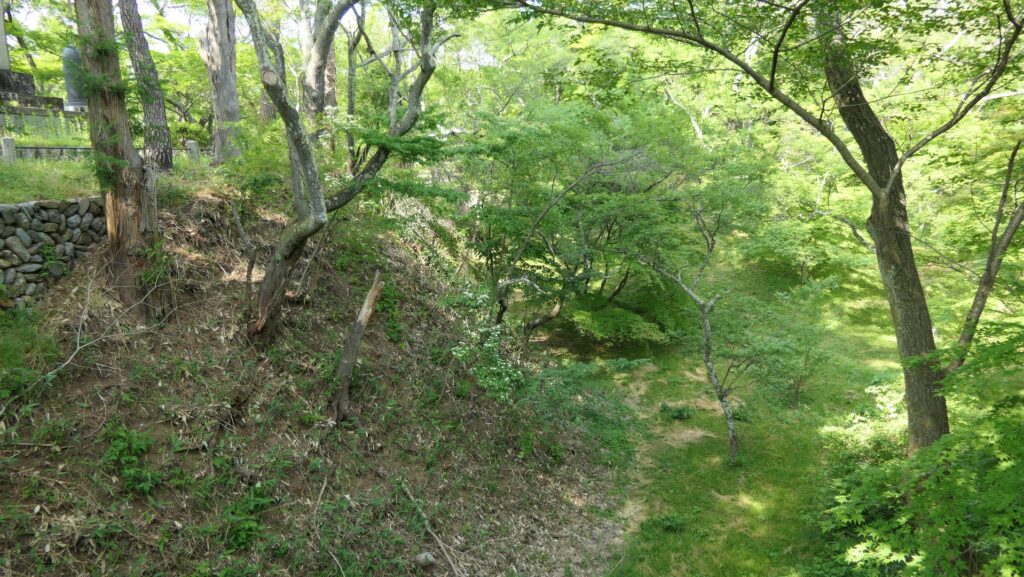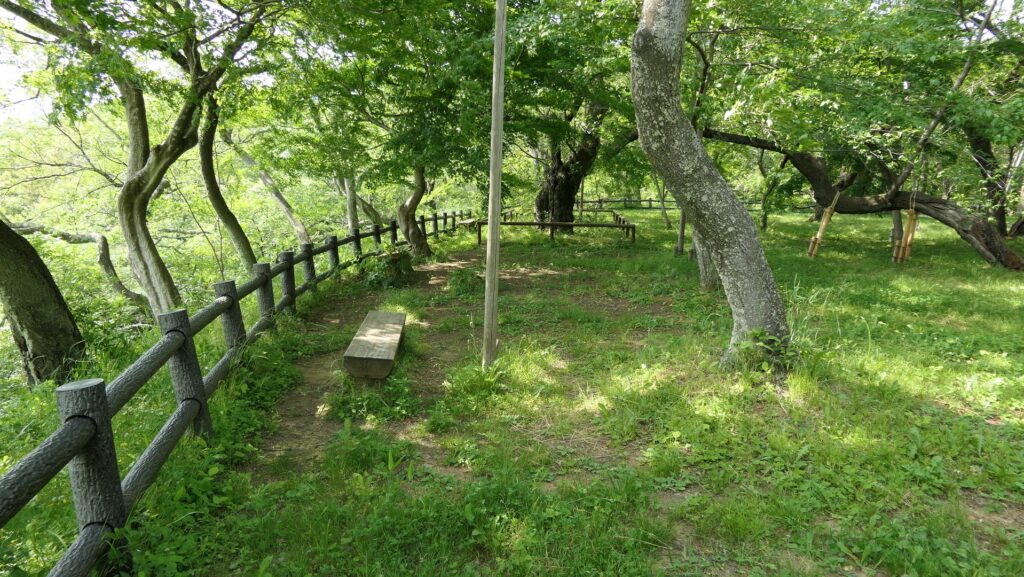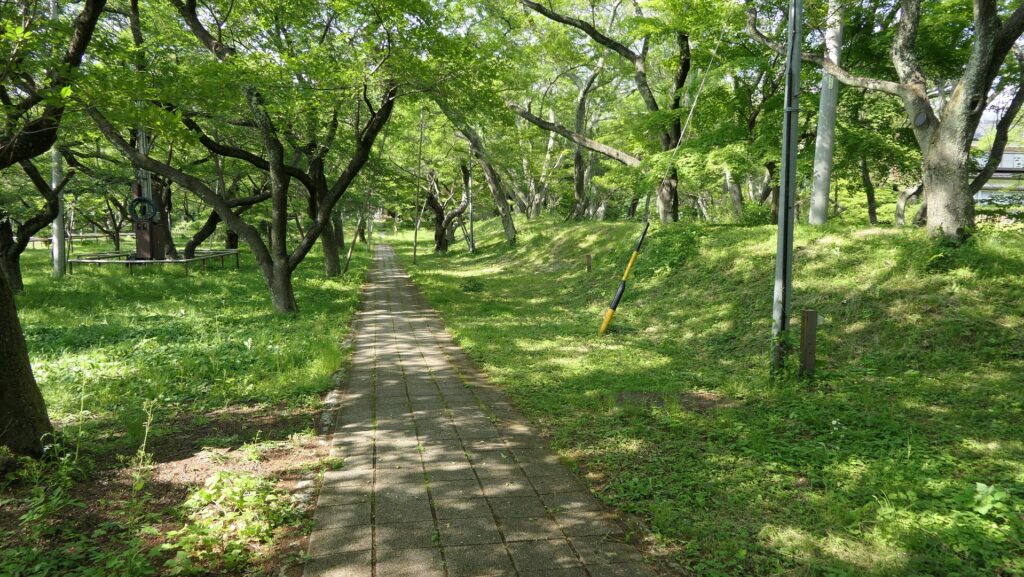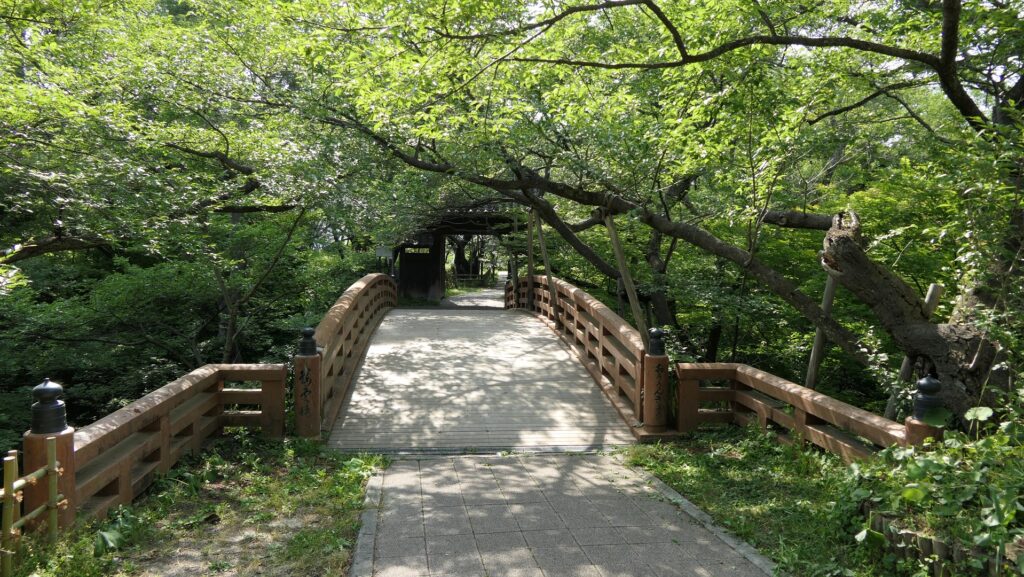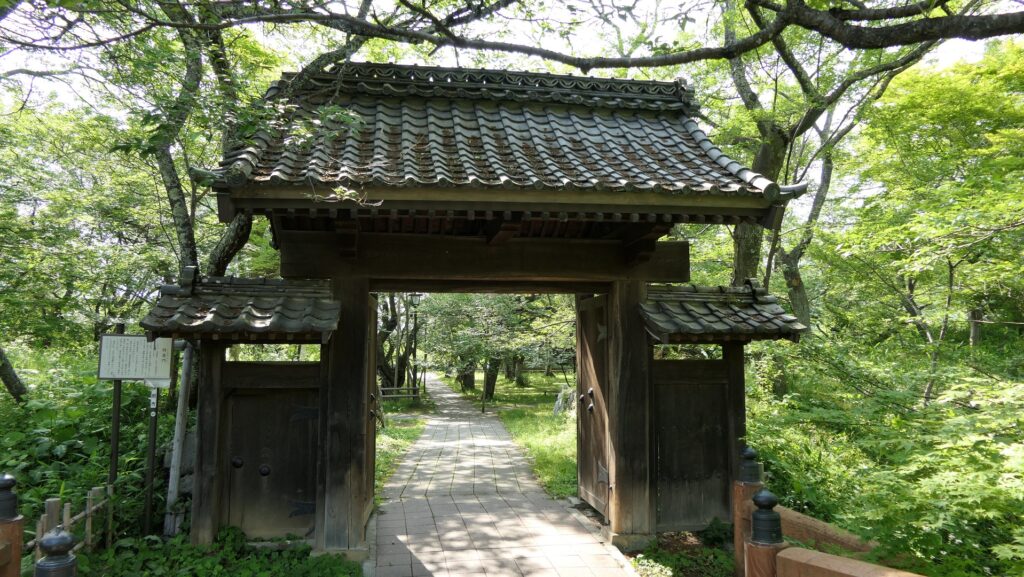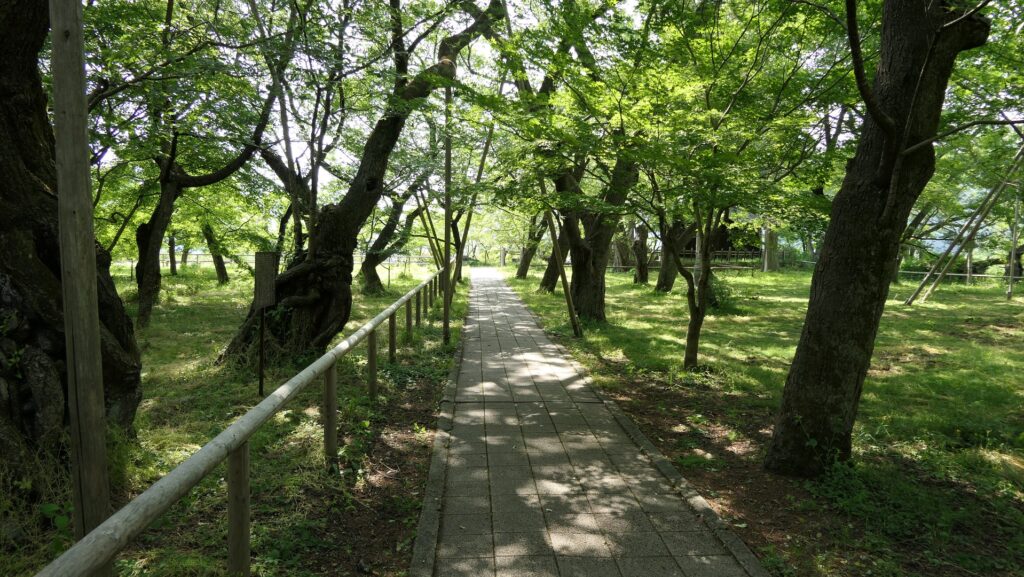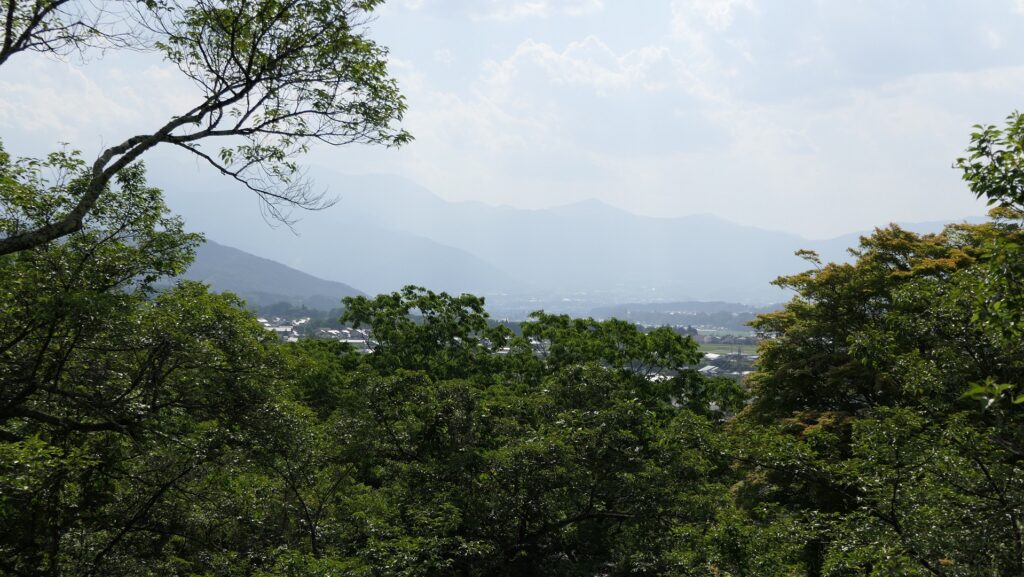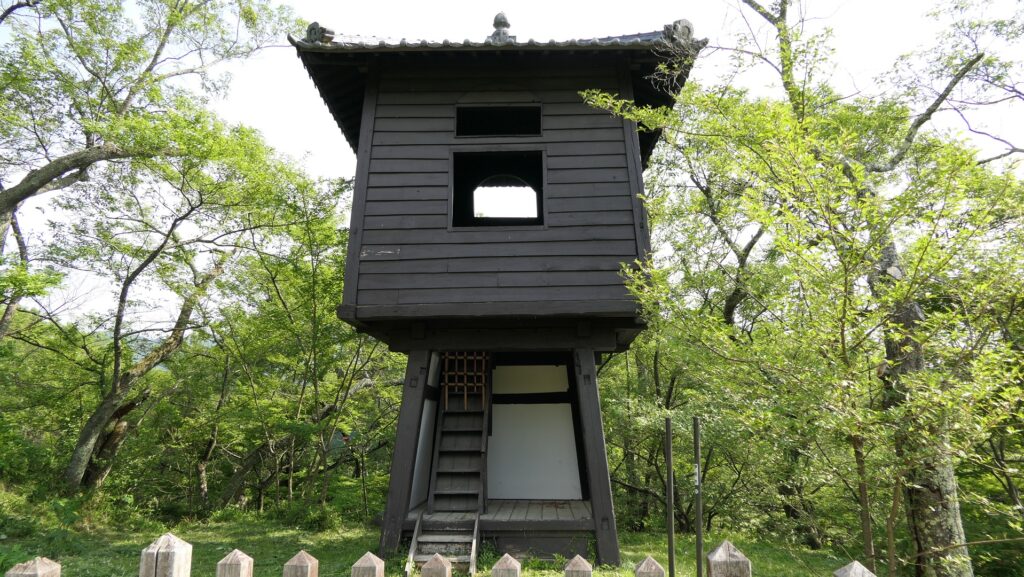Features
Main Enclosure as Park and rebuilt Main Tower
Now the ruins of Takashima Castle became the modern day Takashima Park. The park includes the Main Enclosure and the water moat of the northern and eastern sides of it. Other enclosures were turned into the city area. Suwa Lake is now about 400m away from the park, so it is difficult to imagine “the floating castle”. The stone walls of the enclosure and the moat are original, and some buildings such as the Main Tower were rebuilt.
The aerial photo around the castleThe rebuilt Main Tower is actually a modern building which looks similar to the original one. The building has a cooper plate roofing, not wooden strip roofing from the original, but they probably resemble each other. The inside of the tower is used as a historical museum and an observation platform. You can see a view of Suwa Lake in the distance from the top. You may also have a feeling of the passage of time.
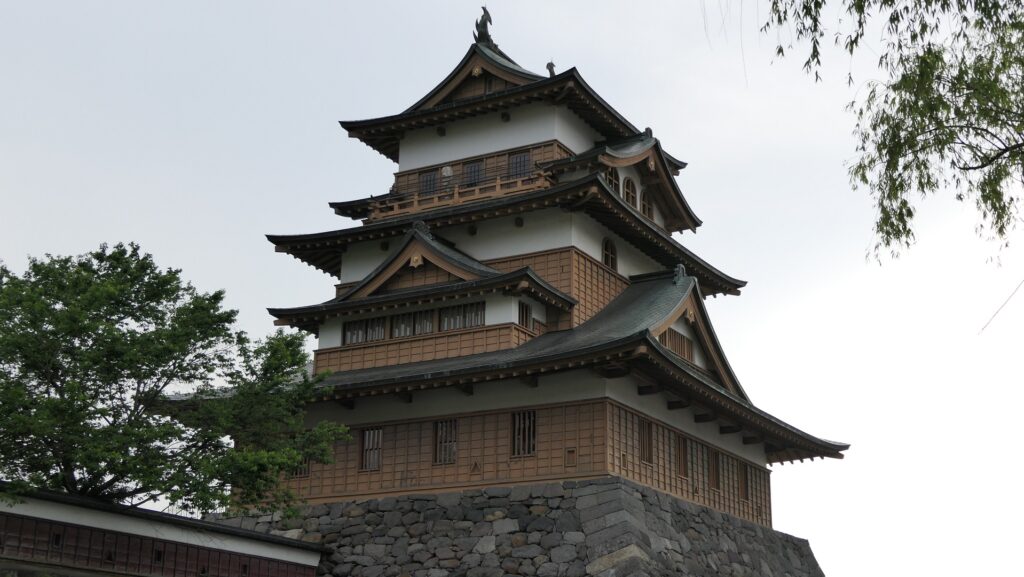
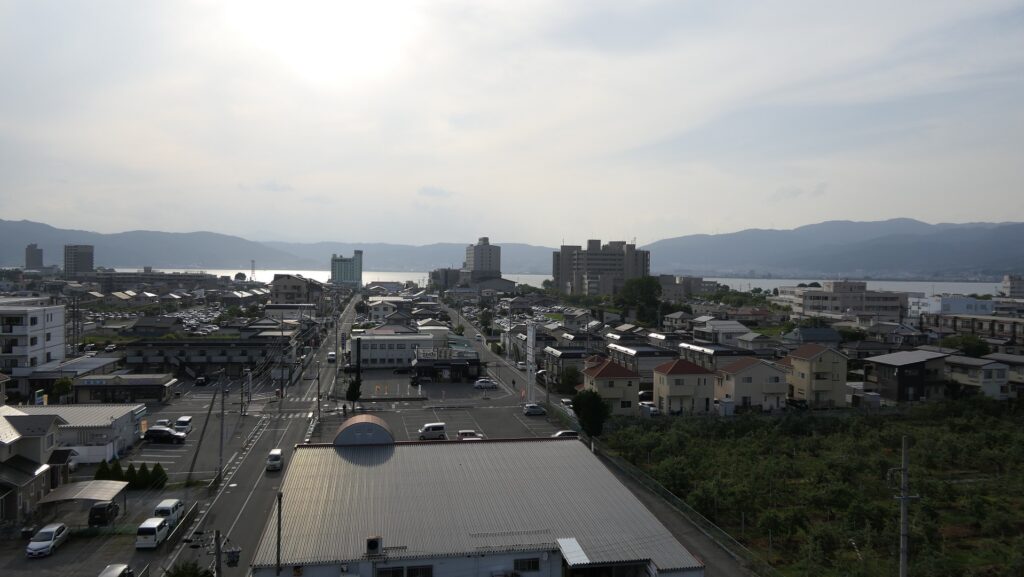
Three Entrances of Main Enclosure
The Main Enclosure has three entrances. The Kabuki-mon Gate was rebuilt on the heavy stone walls at the northern side of the enclosure. It was also the front gate of it, connected to the Second Enclosure, and only high class people were allowed to use the gate.
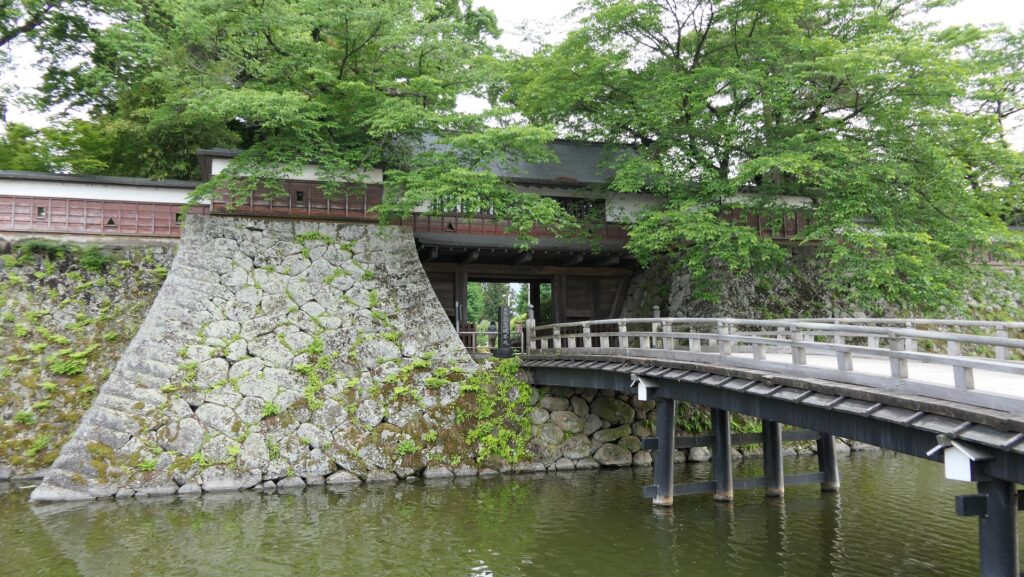
The Kawado-mon Gate is at the western side of the enclosure. The remaining building was actually used as the back gate of the Main Hall at the Third Enclosure, and moved to the present position. When the castle was beside the lake, it was possible to take a ship to the lake from this gate.
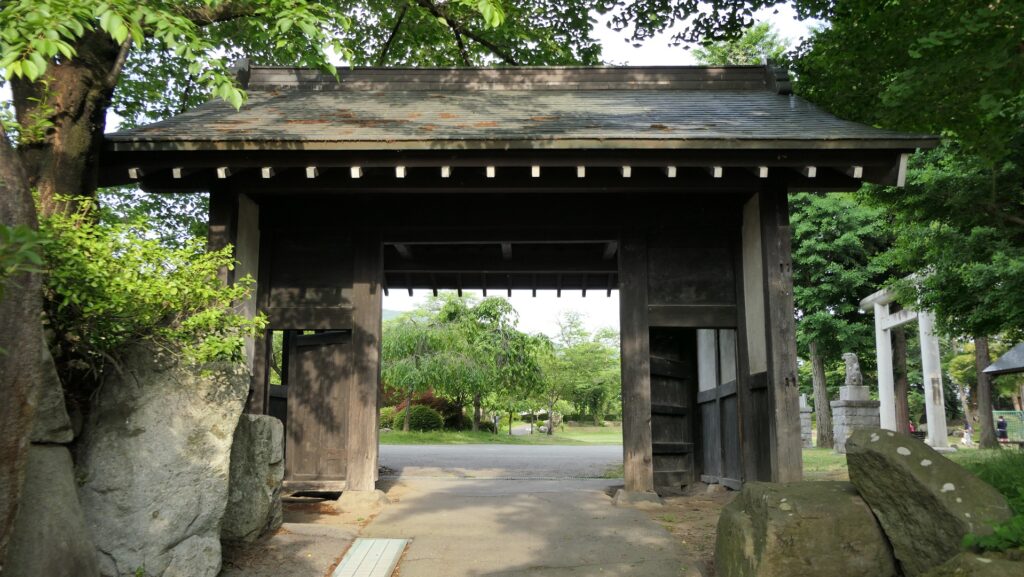
The ruins of Tsuchido-mon Gate is at the southern side of the enclosure. It was the side gate for people who couldn’t use the front gate, Kabuki-mon.
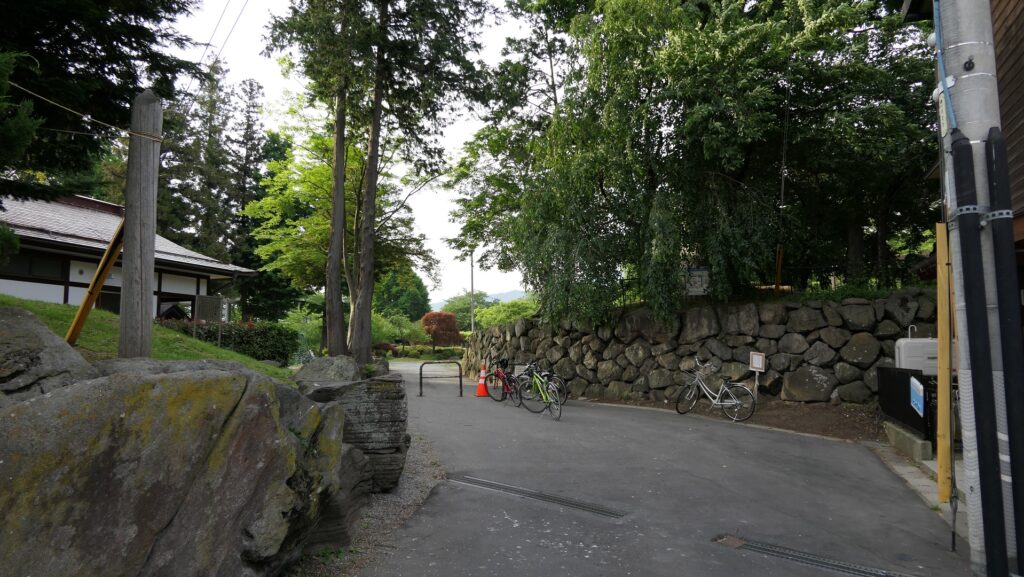
The Main Hall for the lord was inside the enclosure where a Japanese garden and Suwa-Gokoku Shrine are now.

Remaining items and Rebuilt ones
The remaining stone walls surrounding the Main Enclosure still look great today. Three turrets were originally on the stone walls, and only one of them, the Sumi-yagura or the Corner Turret was rebuilt.

You can see the combination of the Main Tower, the Kabuki-mon Gate, and the Sumi-yagura Turret with the water moat and bridge at the northern side of the enclosure. In my opinion, this is the best spot to take photos.

To be continued in “Takashima Castle Part3”
Back to “Takashima Castle Part1”

